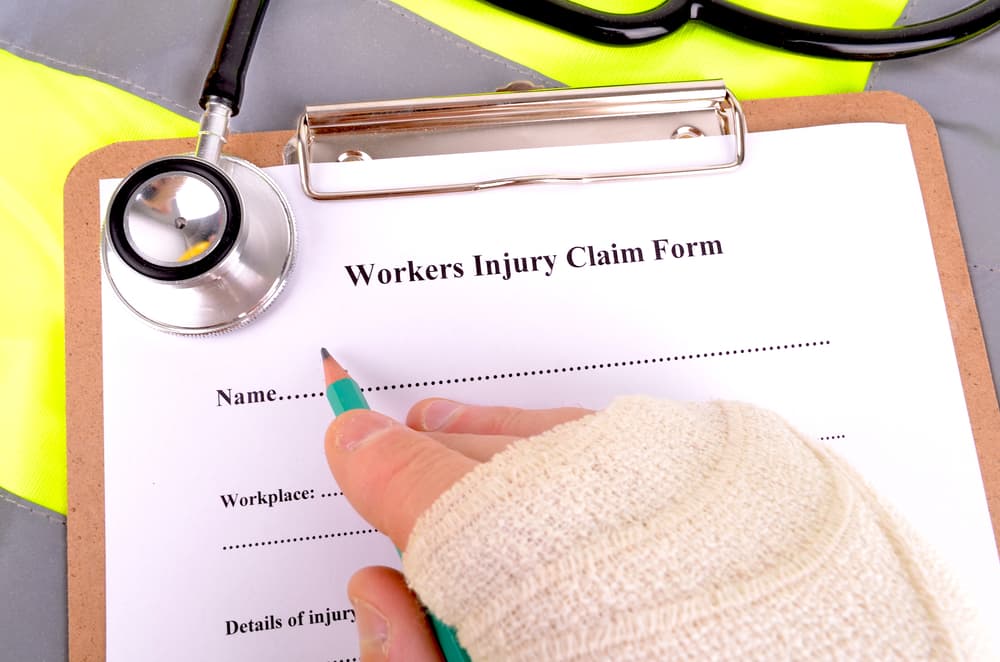Pain and suffering is a legal term that refers to the physical and emotional distress experienced by an individual due to an injury or illness.
In the context of personal injury law, pain and suffering damages are meant to compensate the victim for the physical pain, mental anguish, and reduced quality of life they have endured due to the negligence or wrongful actions of another party. A personal injury lawyer can help navigate this complex aspect of the legal process to ensure you receive fair compensation.
Understanding the legal definition of pain and suffering is crucial when pursuing compensation for your injuries.
Pain and suffering encompass a wide range of physical and emotional experiences, and the value of these damages can significantly affect the overall settlement or verdict in a personal injury case.
What Is Pain and Suffering?

Pain and suffering refer to the physical and emotional distress experienced by an individual due to an injury or illness. This can include:
- Physical Pain: The actual physical discomfort and pain, such as throbbing, burning, or aching, caused by the injury or medical condition.
- Mental Anguish: The emotional distress, including anxiety, depression, fear, anger, and loss of enjoyment of life, resulting from the injury or condition.
- Loss of Enjoyment of Life: The inability to participate in and enjoy the activities and hobbies you previously enjoyed due to the limitations imposed by your injuries or condition.
Types of Pain and Suffering
A personal injury case can recover several different types of pain and suffering damages:
- Past Pain and Suffering: The physical pain, mental anguish, and loss of enjoyment of life experienced from the time of the injury up until the date of the settlement or trial.
- Future Pain and Suffering: The anticipated physical pain, mental anguish, and loss of enjoyment of life that the victim is expected to experience in the future as a result of the injury.
- Permanent Pain and Suffering: The ongoing physical pain, mental anguish, and loss of enjoyment of life that the victim will experience for the rest of their life due to the permanent nature of the injury.
Examples of Pain and Suffering Injuries and Damages
Pain and suffering damages can arise from a wide range of personal injury cases, including:
- Motor Vehicle Accidents: Injuries such as broken bones, spinal cord injuries, traumatic brain injuries, and whiplash can result in significant physical pain and emotional distress.
- Slip and Fall Accidents: Injuries like hip fractures, head injuries, and soft tissue damage can cause substantial pain and suffering.
- Medical Malpractice: Surgical errors, misdiagnosis, and other medical negligence can lead to prolonged pain, suffering, and reduced quality of life.
- Workplace Accidents: Injuries sustained on the job, such as back injuries, amputations, and burns, can result in both physical and emotional suffering.
- Intentional Torts: Victims of assault, battery, or other intentional acts may experience severe psychological trauma and distress.
Factors Affecting the Value of Pain and Suffering Claims
The value of a pain and suffering claim can vary significantly depending on:
- Severity of the Injury: The more severe and debilitating the injury, the higher the potential value of the pain and suffering claim.
- Duration of the Injury: Injuries that result in long-term or permanent impairment generally have a higher value for pain and suffering.
- Impact on Daily Life: The degree to which the injury disrupts the victim’s ability to perform daily activities and enjoy their life can impact the value of the claim.
- Medical Treatment and Recovery: The type and duration of medical treatment required, as well as the victim’s prognosis for recovery, can affect the pain and suffering damages.
- Age and Life Expectancy: Younger victims with a longer life expectancy may be able to recover higher pain and suffering damages.
- Objective Evidence of Pain and Suffering: Medical records, testimony from healthcare providers, and other objective evidence can help support the value of the pain and suffering claim.
Legal Remedies for Pain and Suffering in Texas
In Texas, there are several legal remedies available to individuals who have suffered pain and suffering due to the negligence or wrongful actions of another party:
- Personal Injury Lawsuits: Filing a personal injury lawsuit against the responsible party is the most common way to seek compensation for pain and suffering damages in Texas.
- Workers’ Compensation Claims: Employees who suffer work-related injuries or illnesses may be able to file a workers’ compensation claim to recover benefits, including compensation for pain and suffering.
- Wrongful Death Claims: In cases where a person’s death is caused by the negligence or wrongful act of another, their surviving family members may be able to file a wrongful death claim, which can include damages for the decedent’s pain and suffering.
Seeking Compensation for Pain and Suffering
To recover compensation for pain and suffering in a personal injury case, you must be able to demonstrate that the defendant’s negligence or wrongful actions were the direct cause of your injuries and the resulting physical and emotional distress.
This typically involves:

- Documenting Your Injuries: Maintain detailed medical records, including diagnoses, treatment plans, and prognoses, to support the severity and impact of your injuries.
- Quantifying Your Damages: Work with your healthcare providers and a personal injury attorney to calculate the monetary value of your past and future pain and suffering.
- Providing Objective Evidence: Gather any relevant evidence, such as witness testimonies, photographs, or video footage, to corroborate the extent of your pain and suffering.
- Negotiating a Fair Settlement: Your personal injury attorney will negotiate with the defendant’s insurance company or legal counsel to secure a fair settlement that adequately compensates you for your pain and suffering.
Statute of Limitations for Pain and Suffering Claims in Texas
In Texas, the statute of limitations for personal injury claims, including those involving pain and suffering, is generally two years from the date of the injury or the discovery of the injury.
It is important to note that there may be exceptions or special circumstances that could affect the statute of limitations, so it is crucial to consult with a personal injury attorney as soon as possible to ensure that your claim is filed within the appropriate timeframe.
Do Online Texas Pain And Suffering Calculators Give Accurate Settlement Estimates?
While online pain and suffering calculators can provide a general estimate of the potential value of your claim, they should not be relied upon as the sole basis for determining the true worth of your case.
These calculators often use broad, generalized formulas that do not account for the unique circumstances and nuances of your situation.
The most accurate way to determine the value of your pain and suffering damages is to work closely with an experienced personal injury attorney who can thoroughly evaluate the specifics of your case, including the severity of your injuries, the impact on your daily life, and the available evidence to support your claim.
Your attorney can then use their knowledge of past settlements and verdicts, as well as their negotiation skills, to advocate for the maximum compensation you are entitled to receive.
Is There a Limit to Pain and Suffering Damages?

Texas caps pain and suffering damages in specific situations:
- Medical Malpractice Cases: In medical malpractice cases, Texas law limits the total amount of non-economic damages, which includes pain and suffering, to $250,000 per claimant and $500,000 per incident, regardless of the number of defendants.
- Exemplary (Punitive) Damages: While there is no cap on compensatory damages for pain and suffering, Texas limits the amount of exemplary (punitive) damages. Exemplary damages punish the defendant for particularly egregious or reckless conduct.
It is important to note that the specific circumstances of your case, as well as the jurisdiction in which the claim is filed, can impact the potential limits on pain and suffering damages.
Your personal injury attorney can provide you with more detailed guidance on the laws and limits applicable to your particular situation.
How Do You Prove Pain And Suffering?
Proving pain and suffering damages in a personal injury case can be challenging, as it involves quantifying the subjective and intangible experiences of the victim. To successfully demonstrate the extent of your pain and suffering, you will need to provide a combination of:
- Medical Records: Detailed medical documentation, including diagnoses, treatment plans, and prognoses, can help establish the severity and duration of your physical and emotional injuries.
- Testimony from Healthcare Providers: Statements from your doctors, physical therapists, and other healthcare professionals can provide expert opinions on the impact of your injuries and the resulting pain and suffering.
- Testimony from the Victim: Your own testimony, as well as that of your family and friends, can describe the day-to-day impact of your injuries and the resulting limitations on your ability to engage in your usual activities and enjoy your life.
- Photographic or Video Evidence: Visual documentation of your injuries, as well as the impact on your daily life, can help paint a vivid picture of your pain and suffering.
- Journals or Diaries: Keeping a detailed record of your physical and emotional experiences throughout your recovery can provide compelling evidence of the ongoing nature of your pain and suffering.
- Expert Witness Testimony: Depending on the complexity of your case, you may need to retain the services of a medical or psychological expert to objectively assess the extent and duration of your pain and suffering.
By presenting a comprehensive and well-documented case, you can increase the likelihood of recovering the full and fair compensation you deserve for your pain and suffering.
Working with a Personal Injury Lawyer for Pain and Suffering Cases
When dealing with a personal injury case involving pain and suffering, work with an experienced personal injury lawyer. A skilled attorney can:
- Investigate and Evaluate Your Case: Your lawyer will thoroughly investigate the details of your accident or injury, gather all relevant evidence, and assess the potential value of your pain and suffering claim.
- Negotiate with Insurance Companies: Your attorney will handle all communications and negotiations with the insurance company, ensuring that they do not undervalue your pain and suffering damages.
- Prepare and Present Your Case: Your lawyer will work with you to build a strong, well-documented case, including presenting medical evidence, expert testimony, and other supporting documentation.
- Advocate for Your Interests: Your personal injury attorney will be your dedicated advocate, fighting to protect your rights and secure the maximum compensation you deserve for your pain and suffering.
- Navigate the Legal Process: Personal injury cases can be complex, with strict deadlines and procedural requirements. Your lawyer will guide you through the entire legal process, filing your claim properly.
Working with a knowledgeable personal injury attorney increases your chances of recovering the full and fair compensation you deserve for the pain and suffering you have endured.
Common Misconceptions about Pain and Suffering Claims
There are several common misconceptions about pain and suffering claims that are important to address:
- Pain and Suffering is Easy to Prove: Contrary to popular belief, proving the extent and value of pain and suffering damages can be challenging. It requires a comprehensive and well-documented case, as well as the experience of a skilled personal injury attorney.
- Pain and Suffering is Only for Physical Injuries: Pain and suffering damages can also be awarded for emotional and psychological injuries, such as PTSD, anxiety, and depression, as a result of an accident or incident.
- There is a Set Formula for Calculating Pain and Suffering: There is no one-size-fits-all formula for determining the value of pain and suffering. Each case is unique, and the final settlement or award will depend on various factors.
- Pain and Suffering Claims are Automatically Approved: Insurance companies and defendants will often try to minimize or deny pain and suffering claims. A strong legal strategy and presentation of evidence is necessary to secure a fair settlement.
- Pain and Suffering Claims are Only for Catastrophic Injuries: While more severe injuries generally result in higher pain and suffering damages, even minor injuries can still warrant compensation for the physical and emotional distress experienced by the victim.
Get Your Free Consultation With Francis Injury

Understanding and addressing these misconceptions can help you navigate the legal process and ensure that you receive the full and fair compensation you deserve for your pain and suffering.
If you or a loved one have suffered from pain and suffering due to an accident or injury in Texas, don’t hesitate to schedule a free consultation with the experienced personal injury attorneys at Francis Injury.
Our team will thoroughly evaluate your case, help you understand your legal options, and fight to secure the maximum compensation you are entitled to receive. Contact us today to get started.

